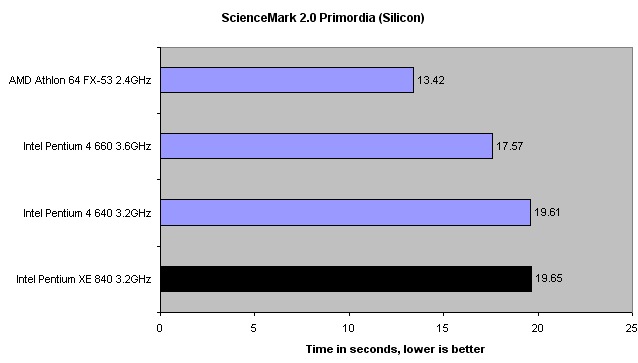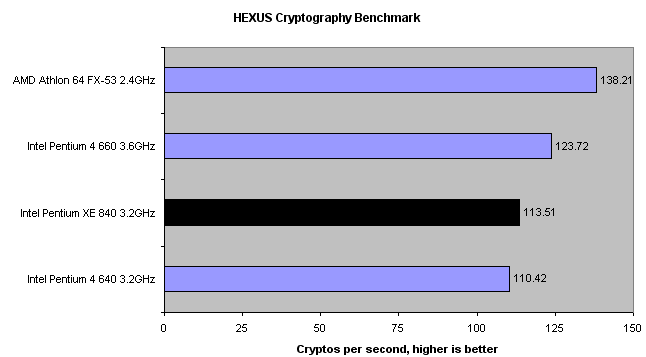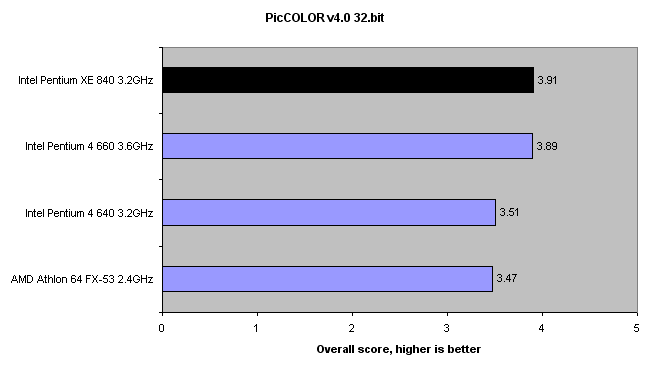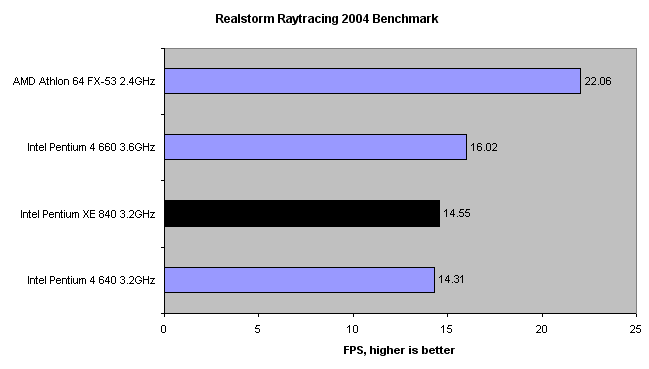Primordia, Crypto, picCOLOR, Raytracing

That's also true of ScienceMark 2.0's Primordia calculation. Results are in line with a 3.2GHz 2MB cache single-core model's.

The XE 840 returns a slightly better-than-expected score in HEXUS' in-house cryptography benchmark, but is still some way behind figures posted by an Athlon 64 FX-53. Processor parallelism needs to be allied with applications that can take advantage of its resources.

Things look up in our picCOLOR benchmark. It's a multi-threaded benchmark that can take advantage of the XE 840's dual cores and Hyper-Threading implementation. It's over 11% percent faster than a single-core 3.2GHz Pentium 4 640.

No real benefits of having a total of 4 processors in Realstorm Raytracing benchmark. Sheer floating-point grunt from the Athlon 64 range sees it top the chart, as usual.









